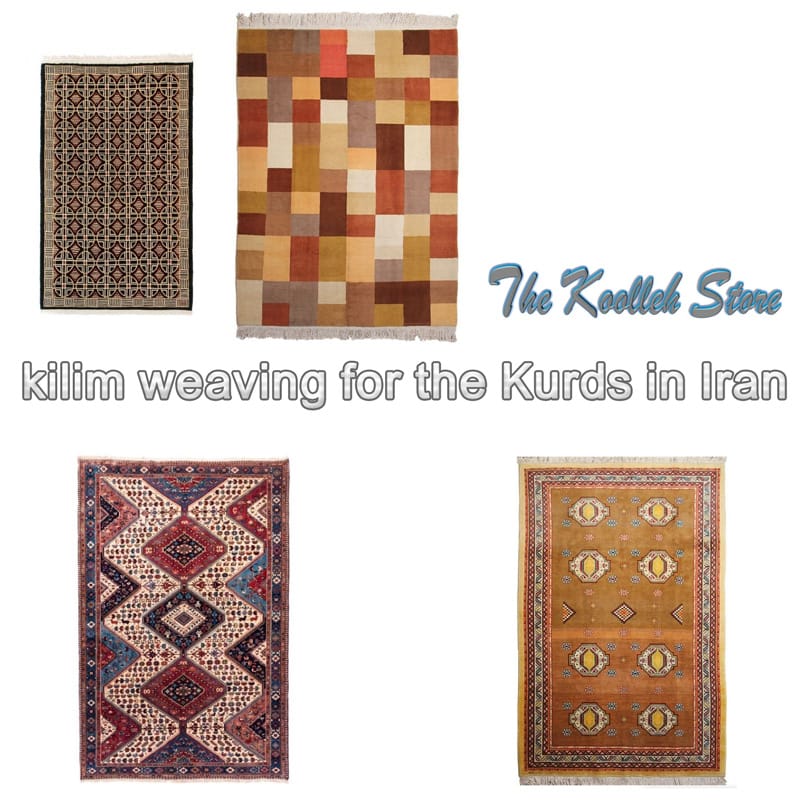kilim weaving for the Kurds in Iran

From the racial point of view, the Kurds, like the other peoples of this land – the Puritans and Baluchis – are Iranian. Exiles, immigrants, and marriages between different tribes have been going on for thousands of years. It has divided the Kurds into groups with different beliefs and traditions. The dispersal of the Kurdish population has had a direct impact on their history. Most Kurds live in the provinces of Kurdistan and Kermanshah. Large tribes of Kurds reside in the far northeast of Iran in the Kopet Dagh mountains of Khorasan and a small number in the western parts of Takestan and southeastern Iran among the Baluchis.
Due to the widespread dispersal of the Kurds, there is also a great difference in their kilims. These differences are apparent in design, texture, materials used, size and color.
The most famous kilims of Kurdistan is the scene that currently includes Sanandaj and its surroundings. The scene has always been the center of Kurdish carpet and kilim workshops. The kilims of the scene differ in terms of both age and aesthetics of other Kurdish tribes, and resemble Iranian knotted carpets more than others.
The text layout in the kilims of the scene is an infinite repetition of floral designs or a floral design in the middle bergamot. These kilims are usually small and rectangular. Of course, they are also woven in large size and circle. The colors are often blue, red and white. The strings are usually of yarn and padding, often of woolen, silk and more recently polychrome silk. Stage kilims are known for their elegance and beauty.
Bijar is a commercial district and city on the outskirts of Kurdistan called Kilim of textures, belonging to the town itself and its forty villages. The kilim is long and narrow, with triangular or rhinestone colored bergs. One of the most beautiful and interesting features of some of these kilims is the human and animal tissue in the text or on the margins.
Khorasan Kurds use a wide variety of designs, colors and techniques in their hands. The kilims are often coarse-grained, with mild to slightly darker colors. These kilims do not have the radiance and life of the northwest kilims of Iran.
Bijar is one of the important weaving centers in which various tribal groups live. This kilim may be related to the Shahsun or other tribes of northwestern Iran, but its particular color and paintings preferably belong to Kurdistan.
Kilim wool is rough, thick and colored. This color is made from the roots of Rhododendron and Dough water. The designs that resemble human and animal forms on the sides of the text are features of Kurdish textiles. According to marketers, these designs make the bride and groom at their wedding a dream come true. Happiness gives birth.
Khorasan Kurds Subversion of the Quchan and Bojnourd areas in northwest Mashhad. This bed was woven into two pieces at the end of the nineteenth century, and on a plain background, the added pads consisted of long roots and decorative tassels on both sides of the rug.






Leave A Comment
You must be logged in to post a comment.